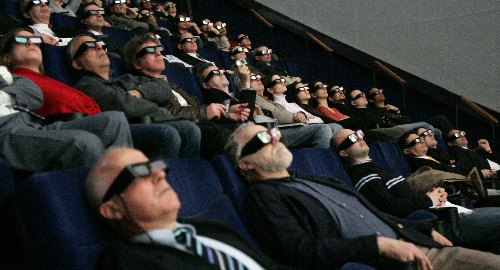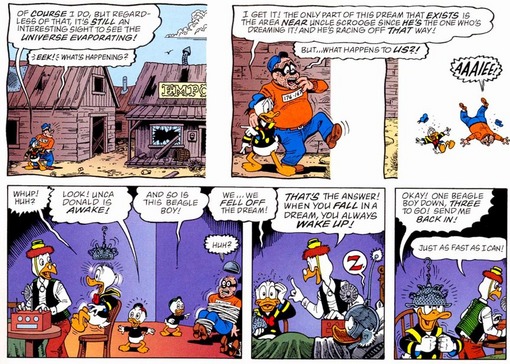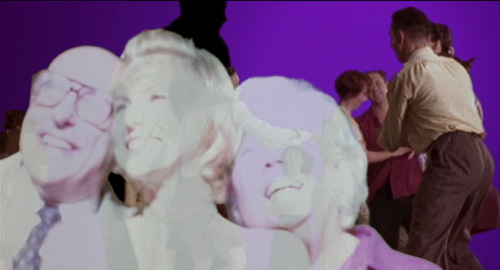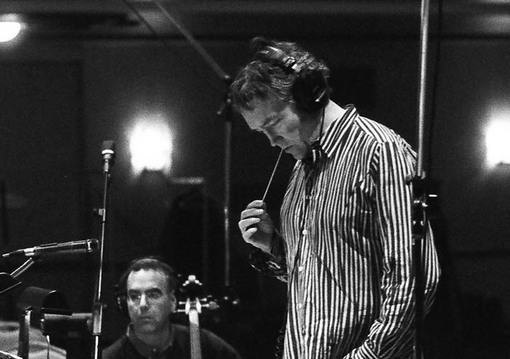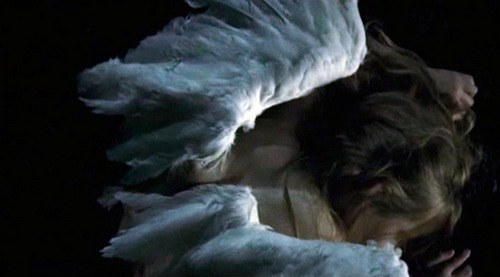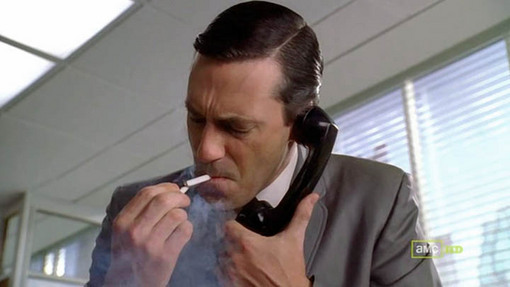View image “There is no god!!!”
Thanks for all the terrific, thoughtful suggestions for my hypothetical Atheist Film Festival (below) — “Freddie Got Fingered” (either “proof” of the absence of god, or a devastating comment on the divine sense of humor), “Contact,” “Wise Blood,” all of Buñuel, “Grizzly Man,” “Crimes and Misdemeanors”… Don’t stop now!
View image [Reverse zoom.] Whimpering: “I’m so sorry. Forgive me.”
I think a slam-bang opening for such a festival would be one of my favorite underrated films of the 1980s, Anthony Perkins’ 1986 “Psycho III,” which begins with a black screen and a hair-raising scream of anguish: “There is no god!!!” What’s more, we soon learn that it is the cry of a devastated novice, and that (even better) she’s played by Diana Scarwid! (That’s Christina Crawford to you “Mommie Dearest” fans — and something tells me Perkins was one, too.)
View image [Reverse zoom, cont.] Stronger: “Give me a sign. Help me.”
View image [Static shot.] Silence.
Before we know it (in the third shot — or the fourth, if you include the blackness between the Universal logo and the statue of the Virgin), we’ve smudged the line between “Psycho” (1960) and “Vertigo” (1958), looking up into a California mission belltower. A few vertiginous shots and a maniacal sniveling nun (and a few nice ones) later, and the movie is off to a rip-roaring psycho-vertiginous start.
View image Psych– er, Vertigo?
The nuns approach Maureen (the hysterical novitiate) and attempt to coax her down from the archway where she is poised to throw herself, Kim Novak-like, from the tower. “There is no god!” Maureen cries again — not in rage but in despair, as if she’s just discovered a shattering, horribly disappointing truth.
The crazy nun raves: “You wretched girl! How dare you!”
The eldest nun tries to snap her out of it: “Please Maureen, you mustn’t. You have an obligation to Him!”
“I have nothing,” Maureen says dejectedly. “I am nothing!”
View image Another blonde, another belltower…
And then all hell breaks loose.
That’s just the first four minutes, before the titles. And it’s not giving too much away to say that Maureen becomes Norman Bates’ very first girlfriend. They’re a match made in… wherever.
View image Inverted crosses, anyone?
“Psycho III” is a joy, a sequel that understands the original from the inside out. It’s a celebration, a satire, a revisitation, and a deeply felt, detail-perfect homage to Hitchcock’s bleak masterpiece. (I’d say “Psycho” is not so much an atheistic work as a nihilistic one. The specificity of the opening sequence perversely indicates the randomness of the particular story the movie chooses to tell. And Simon Oakland’s psychobabble wrap-up at the end mocks not only psychology but any and all belief systems.)
View image Nun: “You have an obligation to Him!”
Novice: “I have nothing. I am nothing!”
I’ve always thought of “Psycho” as a family black-comedy — a horror sitcom. And, from the perspective of 1986, Perkins reminds us of how funny “Psycho” (and Norman) is. “Psycho III” strikes the perfect balance between horror, tragedy, and camp.
The screenplay is by Charles Edward Pogue, who is also credited with co-writing David Cronenberg’s horror / comedy / romantic version of “The Fly” (“Be afraid — be very afraid”) the same year — and the clever, underrated remake of “D.O.A.” in 1988. And the rest of the crew is top-of-the-line, including such Clint Eastwood vets as D.P. Bruce Surtees (“Dirty Harry,” “Night Moves,” “Risky Business,” “Pale Rider”) and the late production designer Henry Bumstead (“Topaz,” “Mystic River,” “Flags of Our Fathers,” “Letters From Iwo Jima”). The score is by Carter Burwell (“Miller’s Crossing,” “Barton Fink”) and the producer is Hilton A. Green — second unit / assistant director on “Psycho” and “Marnie.”
If you want to discover Maureen’s fate — and see just how wittily and poignantly “Psycho III” pays attention to the details of its source — check after the jump.
Meanwhile: Any more candidates for the Atheist Film Festival? (I’ve tried to refine what I mean by an “atheist film” — as opposed to an anti-god or anti-Christian film — in a comment here.)
December 14, 2012

